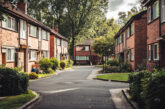
Andy Greenhorn, Northern Regional Sales Manager at FireAngel, discusses the requirements of the Smoke and Carbon Monoxide Alarm Regulations 2022 and explores how electrical contractors can achieve high standards of protection by installing systems that comply with the updated Scottish Tolerable Standard.
Aiming to achieve a greater consistency in the level of protection provided throughout residential rental properties in England, the Smoke and Carbon Monoxide Alarm (Amendment) Regulations 2022, which were introduced on 1st October 2022, include both socially and privately rented properties.
Implemented following the government’s findings of its domestic smoke and carbon monoxide alarm consultation, both private and social landlords are now required to provide one smoke alarm on each storey of their property, in addition to the installation of a carbon monoxide (CO) alarm in any room with a fixed combustion appliance, which includes boilers, open fire or log burners and water heaters, but excludes gas cookers. Landlords are also legally required to install a CO alarm in their properties when a fixed combustion appliance is fitted, as well as ensure repairs or replacements when notified of a fault.
The British Standards should also be referred to regarding appropriate alarm placement. Landlords must ensure the alarms comply with British Standard EN 50291-1 and carry a British or European approval mark, such as a Kitemark, to ensure tenants receive the highest standards of protection.
In accordance with European Standard EN 50292, the CO alarm should be fitted in the same room as fuel-burning appliances, such as an open fire, gas cooker or boiler, and can be either wall or ceiling mounted. It is advised that additional alarms should be located in bedrooms relatively close to the breathing zone of the occupants, whilst alarms should also be installed in any room where there is a flue running through it.
Potential penalties
Similar updates regarding fire and CO alarm provisions have also been made to the Renting Homes (Wales) Act 2016. Implemented on 1st December 2022, the amendments aim to ensure both private and social rented properties in Wales are fit for human habitation, with private and social landlords responsible for complying with the new law and making the necessary updates to their properties to avoid being penalised. Failure to do so could result in a fine of £5,000.
Whilst these legislative amendments are a significant step forward with regard to protecting tenants from fire and CO, electrical contractors can support landlords in achieving a higher level of protection by installing systems that comply with the requirements of the Scottish Tolerable Standard, which was introduced on 1st February 2022.
Under the new Scottish regulations, all private and socially rented properties in Scotland must feature an interlinked fire and smoke alarm system that includes one smoke alarm installed in the room most frequently used for general living purposes, such as the living room, in addition to the installation of smoke alarms in every circulation space on each storey, including hallways and landings. A heat alarm should also be installed in each kitchen.
Implemented in response to the Grenfell Tower fire of 2017, the fire safety laws outlined within the Housing (Scotland) Act aim to significantly reduce deaths and casualties from fires throughout all types of residential properties, by providing individuals with increased levels of protection and the earliest possible warning of a fire.
The Scottish standard stipulates that smoke and heat alarms should be ceiling mounted and interlinked, whilst a CO alarm must also be installed in every room where there is a carbon-fuelled appliance, such as a boiler, fire or stove, to ensure adequate CO protection in the presence of a flue-burning appliance or flue. CO alarms do not need to be interlinked and can be battery powered.
Both mains-powered and 10 year sealed long-life battery powered alarms are suitable, if they facilitate either hardwired or wireless interlinking. The mains-powered alarms must comply with a Grade D1 Specification, while the battery powered alarms must meet the requirements of a Grade F1 Specification.
Increased protection level
Here electrical contractors can support landlords in ensuring compliance with the updated standard and provide their tenants with the highest possible standards of safety by recommending and fitting systems that feature Smart RF wireless technologies.
This includes systems such as FireAngel Specification featuring Smart RF technology , which offers electrical professionals the opportunity to further increase the level of protection throughout a residential property, whilst streamlining audit trails and proof of due diligence.
By wirelessly meshing every device onto a private network, remote monitoring of the entire system can be achieved through the installation of a Connected Gateway, either upon initial installation or at a later date. This facilitates the transfer of data from every device in real time to a centralised dashboard, including the current status of every alarm, network health, alarm diagnostics and replacement dates.
From an electrical contractor’s perspective, this enables the documentation of the completion of each installation phase, as information is instantly logged via the wireless network to validate the install. For example, by taking a photograph of each completed installation, the images can be wirelessly uploaded to a centralised platform to generate immediate sign-off, which subsequently produces a certification of fire legislative compliance, in accordance with BS 5839-6.
By facilitating a preventative, rather than reactive, approach to fire and CO safety that can be cost-effectively achieved throughout all types of residential properties, it is our belief that interlinked systems that meet the requirements of the updated Scottish Tolerable Standard should be recommended and installed throughout residential properties across the entire United Kingdom, not just Scotland.
Get more details about FireAngel’s specification range here












